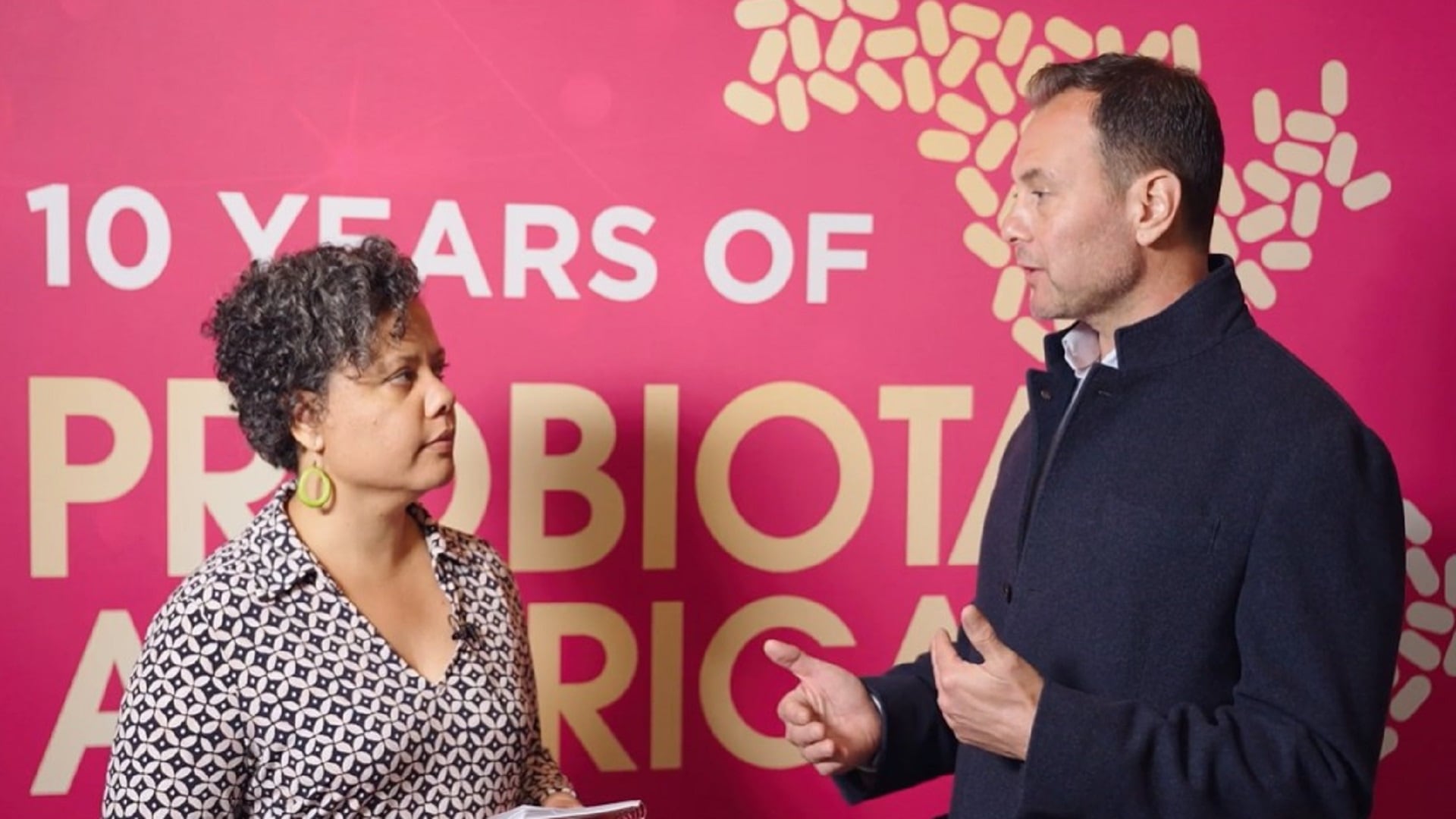Discussions during the recent Probiota Americas conference in Vancouver reflected a growing shift from viewing the microbiome solely as a cornerstone of gut health to recognizing it as a central regulator of the many functions that influence healthspan.
During his presentation on driving growth and innovation in the space, Noah Voreades, founder and managing director at strategic consultancy GenBiome, referred to the microbiome-as-operating-system concept introduced in a recent Microbiome Post article.
“The microbiome in the beginning was thought of as almost a single functional health channel,” he said. “It was really around gut health and all the things you can do with gut health, whether you’re healthy and you just want to optimize the growth of good bacteria or address a gastrointestinal condition.”
In contrast, leveraging the microbiome operating system for human health enables a multifactorial understanding of the gut’s complex, diverse and interconnected contributions to supporting resilience across the lifespan.
Diversity lost: Moving towards modulating healthspan
According to Nutrition Business Journal’s 2024 Longevity Report, sales of supplements targeting healthy aging and longevity are outpacing the overall supplement market and are expected to surpass $1 billion by 2026. Within this category, the prebiotics, probiotics and synbiotics segment is projected to maintain strong double-digit growth through 2027, reaching $44 million in sales.
Meanwhile, data from market research firm SPINS shows that prebiotics and probiotics for digestive health still drive over half of total dollars sales across U.S. natural and multi-outlet channels. Emerging categories such as menopause, reproductive and cognitive health posted the strongest year-over-year growth for the 52 weeks ending May 18, 2025. However, slower gains in areas like weight management, cardiovascular health and blood sugar support suggest significant white space and untapped potential within the broader healthspan category.
Central to the quest to live well for longer is microbial diversity, considered a key indicator of resilience and a starting point for considering what microbes might be missing or depleted by the progression of time and modern lifestyles.
Jack Gilbert, known from his interdisciplinary research on microbial ecology and its implications for human health and the environment, has likened the gut microbiome to a forest ecosystem, where diversity and microbial exchange build resilience or can be disrupted by stressors like antibiotics, sterilization, environmental toxins, indoor living and the standard American diet (SAD). Here, he explained that the immune system serves as a National Park Service that promotes and maintains microbial biodiversity to stimulate beneficial outcomes.
“We can link diversity to long-term health outcomes in individuals,” he said. “A significant increase in diversity is associated with lower level of blood glucose, a lower level of blood pressure, normalized hypertension and a healthy BMI—so your biological risk of cardio-metabolic disease is statistically tied to the number of species of microorganisms living inside you.”

Dr. Nikos Kyrpides, head of microbiome data science at the U.S. Department of Energy’s Joint Genome Institute, noted that a substantial portion of microbial diversity, which he called “microbial dark matter,” remains unexplored and full of functional potential.
He and his team are investigating the divide between cultivated—those grown in a lab—and uncultivated microbes, revealing striking differences in their abundance, metabolic capacity and ecological roles. As research shifts towards decoding the in situ strategies of microbes without relying on cultivation, these data-driven discoveries are reshaping scientific understanding of microbial ecology and its underlying complexity.
“The newer technologies have allowed us to start scratching the surface of the microbial dark matter and start understanding the diversity and what these microbes are doing other than cultivating the diversity of microbes,” he said, highlighting the work of the Unified Human Gastrointestinal Genome (UHGG) collection in providing high-quality reference genomes required for characterizing function and taxonomy of the human gut microbiota.

Focus on feeding and fixing function
Both science and industry are now considering not only the dynamic balance of bacteria, fungi, viruses in the gut but their specific microbial functions along bidirectional gut-organ axes—pathways that affect everything from immunity and metabolism to brain and skin health.
Sessions at Probiota explored strategies to shape the composition and functional abilities of microbial communities in the gut to develop smart, targeted biotics tailored to individual physiology or condition.
These efforts to optimize resilience across life stages begin even before birth and continue through the critical first 1,000 days of life. The Human Milk Institute, Gates Foundation, Novonesis, Kaneka Probiotics and innovative start-ups Tiny Health and Nūmi all presented their different approaches to supporting gut barrier integrity and reducing microbiome dysbiosis in both mothers and babies.
Other companies at the conference—including dsm-firmenich, Kemin, Kerry Group, Lallemand Health Solutions, LeSaffre, Morinaga, Synbalance, Synbiotic Health, Trilliome and Vidya—highlighted the targeted benefits of their precision biotic and bioactive solutions to support lifelong health.

During his talk, Dr. Hariom Yadav, a leading researcher in microbiome and aging science, described the microbiome as a “metabolic detoxifier,” emphasizing its influence on metabolism, weight and long-term health well beyond digestion.
He positioned probiotics as tools designed to target these specific functions, triggering a cascade of signals that increase mucin production, strengthen the gut barrier, combat metabolic dysfunction and promote healthy aging phenotypes.
“We always talk about what microbes produce, and we often talk about what happens when microbial cells are degraded and release their contents, but we very rarely talk about what microbes eat—and how that might actually help in saving our health,” he said.
“We can design specific strategies if we identify the individuals that introduce these metabolic functions into the gut. By doing so, we can restore balance by engineering microorganisms that carry those specific functions. That’s the direction our future should take.”

Microbiologist Zack Abbott, founder and chief executive officer at Zbiotics, delved into how genetic engineering enables the creation of purpose-built probiotics to address deficiencies in the modern-day gut.
In 2019, the company launched Pre-Alcohol, a genetically engineered probiotic that produces an enzyme to break down acetaldehyde—a toxic byproduct of alcohol metabolism that causes cell death—before it can accumulate in the body. Driven by the belief that engineered probiotics can be applied to virtually any biological function, Zbiotics introduced its second product, Sugar-to-fiber, in 2024 to convert the abundance of sugar in the diet into prebiotic fiber that feeds beneficial bacteria in the gut.
Other important considerations on the agenda: how scientific methodology, strain characterization, appropriate enumeration, advanced encapsulation technologies, precise dosing and optimized formulation influence a product’s ability to deliver its intended physiological effects.
Probiota Americas will return to the Westin Bayshore Vancouver from June 8 to 10 for its 2026 conference.
Nutra Healthspan Summit 2025
NutraIngredients is hosting its inaugural Nutra Healthspan Summit at the Park Plaza Victoria London from November 12 to 13. The event will continue to explore the potential of prebiotics, probiotics and postbiotics to influence healthspan, with a featured session titled "Does aging start in the gut? The microbiome and aging" focusing on the microbiome's impact on immunosenescence and cognition. Additional sessions will cover the current market landscape, the 12 hallmarks of aging, the latest science on key bioactives and recent innovations in the field.
For more information or to book your ticket now, click here.




